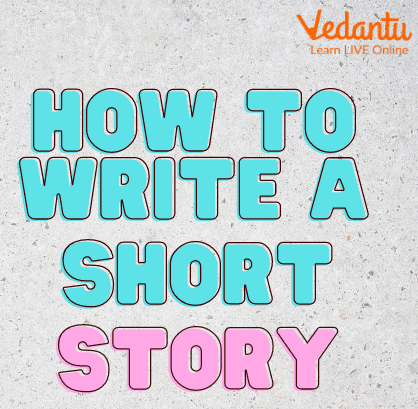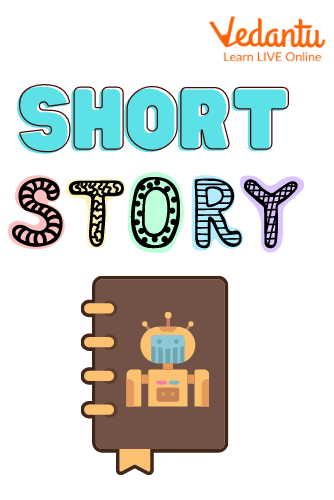




Essential Short Story Writing Steps for Students
Short stories can be equally powerful and moving as lengthier works of fiction for sure. Some argue that this form can be considerably more effective in light of the fact that short stories convey their central message in a single, deep hit.
If a novel is like lighting up a room using all the house lights, then at that point, a short story is like using a flashlight to illuminate a hidden corner. If you wish to write a short story and are looking for a comprehensive guide, your search ends here. Keep reading to find a step-by-step guide on how to write a short story.

How to Write a Short Story?
What is a Short Story?
As the productive writer, short story, and comic book writer Neil Gaiman says: "Short stories are small windows into other worlds and different personalities and different dreams. They're ventures you can make to the most distant side of the universe and still be back in time for dinner."
Short stories are independent works of prose fiction whose capability is to give a moral, catch a moment, or bring out a specific state of mind.

A Diary
Short stories are most of the time more engaging, as every one of the components inside — plot, character, pacing, story structure, etc. — should cooperate towards this common goal.
Most Effective Method to Write a Short Story in 5 Steps
Follow this step-by-step guide for writing a great short story in just 5 easy steps.
1. Pick the Mood you need to Evoke: This is the feeling or emotion you need to provide for your readers, and what every one of the components in your short story will cooperate to accomplish. What kind of story would you like to say — and why?
2. Start with a Strong Opening: Due to the limitations of the short story format, you will not have a ton of space for exposition. To get around this, consider beginning your story in media res — a writerly practice that implies opening in the activity and filling in details later. This takes you directly to your important scene.
3. Build your Story, Remembering that you just have a Specific Number of Words: Try not to sit around idly. All that is included in the short story should be vital. Read and re-read each sentence and ask yourself: does it truly should be there? Does it fill the more significant need of enlightening your story's mood? As Edgar Allan Poe once said: "A short story should have a single mood and each sentence should work toward it."
4. Land the Ending: The ending forms the key moment of the story. While writing the ending of your short story, focus on the mood you're attempting to make and ask yourself: what might be the most fulfilling way for the ending to capture this mood? Keep in mind, a short story is still a story, and that implies the plot needs to make sense, and nothing should be excessively self-evident.
5. Edit, Edit, Edit: Invest some energy away from your story, and return later with a couple of an open-minded perspective.
A Short Exercise!
Answer any of the questions below as briefly as possible, writing down your first reaction. Then, at that point, set a clock for 60 seconds. Use one of your solutions to write the opening of a short story — one paragraph or more.
Then, reset the clock for 30 minutes and finish the story. You don't have much time, so continue writing. Try not to stress over specialty or structure. Write until the clock stops. Furthermore, remember this advice: you can begin a short story anytime in the narrative.
1. What was the most humiliating thing you've experienced in the past few years?
2. When was the last time you cried, and what was the reason for it?
3. What stunned you such that you were speechless?
4. What was the absolute best or worst moment of your childhood?
5. Have you fantasised about revenge recently? Against whom?
Conclusion
This was all about a short and comprehensive guide to write a short story, discussed in 5 simple steps. Do practise the exercise given above and see the outcome for yourself. Remember, to write a good short story, you have to read as many as possible and also practise writing to enhance your writing skills.
FAQs on Step-by-Step Guide: Write a Captivating Short Story
1. What are the five essential elements that form the foundation of a short story?
Every short story is built upon five key elements that work together to create a cohesive narrative. Understanding these is the first step to writing a good story:
Character: The individuals who drive the story forward. A story needs at least one character the reader can connect with or understand.
Setting: The time and place where the story occurs. The setting helps establish the mood and context.
Plot: The sequence of events that make up the story, from the beginning to the end.
Conflict: The central problem or struggle that the main character must face. Conflict creates tension and keeps the reader engaged.
Theme: The underlying message or main idea of the story. It’s what the story is truly about.
2. What are the basic steps for writing a short story from idea to completion?
Writing a short story can be broken down into a simple, structured process. For beginners, following these steps can help organise your thoughts:
Step 1: Brainstorm an Idea: Start with a core concept, a unique character, an interesting situation, or a central conflict.
Step 2: Create an Outline: Map out the basic plot structure, including the beginning (exposition), rising action, climax, falling action, and resolution.
Step 3: Write the First Draft: Focus on getting the story down on paper without worrying too much about perfection. Let your ideas flow freely.
Step 4: Revise and Edit: Review your draft to improve the plot, strengthen characters, clarify language, and fix any grammatical errors or typos. This step is crucial for polishing your work.
3. How does the principle of 'show, don't tell' improve short story writing?
'Show, don't tell' is a writing technique that allows the reader to experience the story for themselves rather than being told what to think. It's about using descriptive language and actions to convey emotions and events. For example:
Telling: 'She was very nervous.'
Showing: 'She tapped her foot on the floor, wrung her hands together, and avoided making eye contact.'
By showing the character's actions, you create a more vivid picture and allow the reader to infer her nervousness, making the story more immersive and believable.
4. What is the importance of a central conflict in a short story?
The central conflict is the engine of the story. Its importance cannot be overstated because it serves several critical functions: it creates tension and suspense, keeping the reader hooked and eager to find out what happens next. It drives the plot forward, giving the characters a reason to act and make decisions. Most importantly, it reveals the true nature of the characters as they are forced to confront challenges, thereby making the story meaningful.
5. How can a writer use setting to do more than just describe a place?
A compelling setting is more than just a backdrop; it is an active participant in the story. A writer can use it to establish a mood (e.g., a dark, foggy street creates a sense of mystery or fear), influence the plot by presenting obstacles (e.g., a blizzard traps the characters in a house), and symbolise the theme or a character's internal state (e.g., a desolate wasteland reflecting a character's loneliness). When used effectively, the setting enhances every other element of the story.
6. What is the generally accepted word count for a short story?
While there are no strict rules, a typical short story generally ranges from 1,000 to 7,500 words. Anything shorter, often under 1,000 words, might be classified as 'flash fiction'. Stories that extend much longer, typically over 17,500 words, start entering the territory of a 'novella'. The word count is important as it dictates the scope of the plot and character development that can be achieved.
7. What are some effective techniques for starting a short story to immediately capture the reader's attention?
The opening of your story is crucial for hooking the reader. Some effective techniques include:
Starting with Action: Begin in the middle of a significant event to create immediate intrigue and momentum.
Introducing a Puzzling Situation: Present a strange or mysterious scenario that makes the reader ask questions.
Using a Strong, Declarative Statement: A bold or unusual opening line can be very memorable and set the tone for the entire story.
Describing a Compelling Character: Introduce your main character in a way that reveals their unique personality or situation from the very first sentence.















